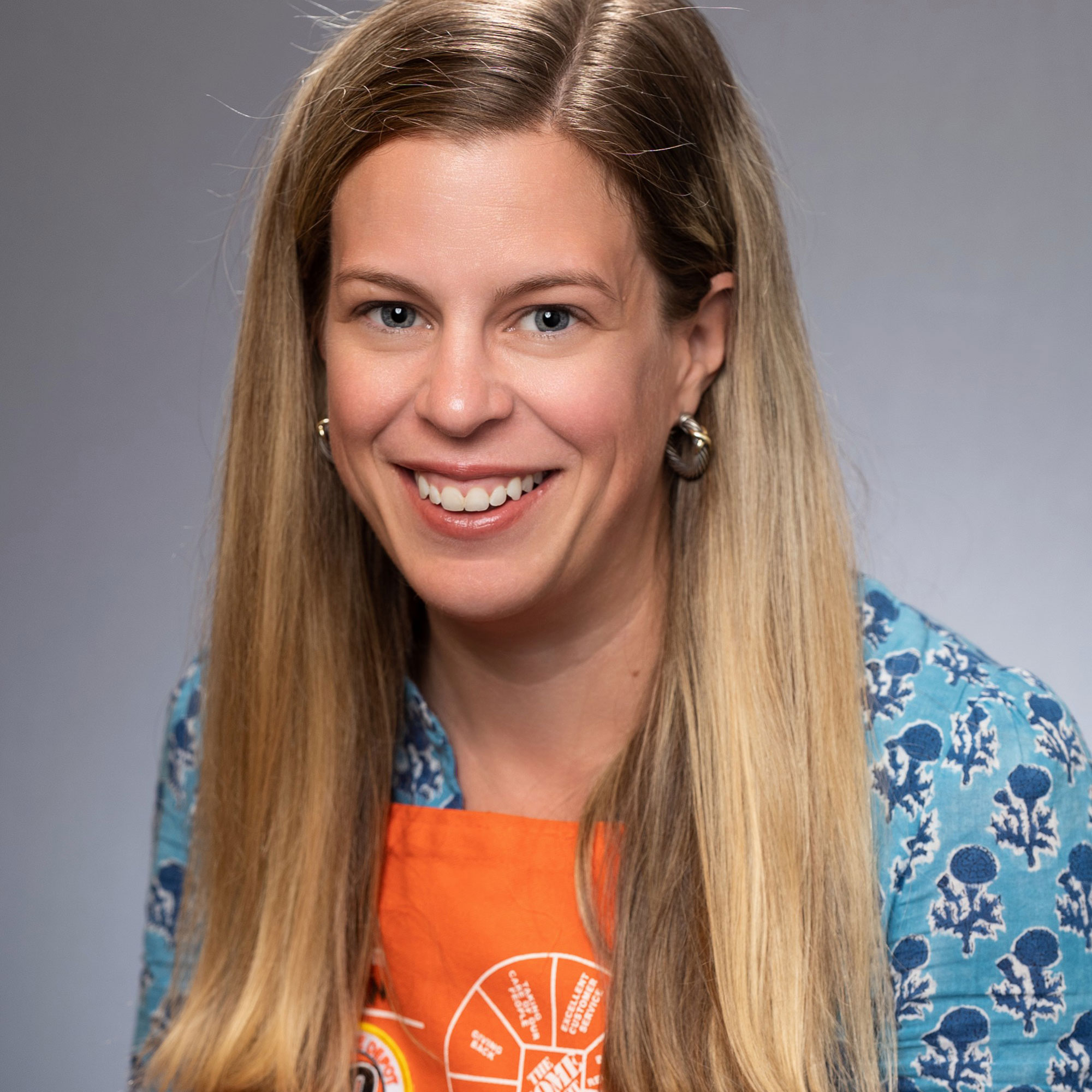Designers weigh in on the best wooden kitchen cabinets for every style of kitchen
Which lumber comes out on top? Here's what kitchen designers recommend
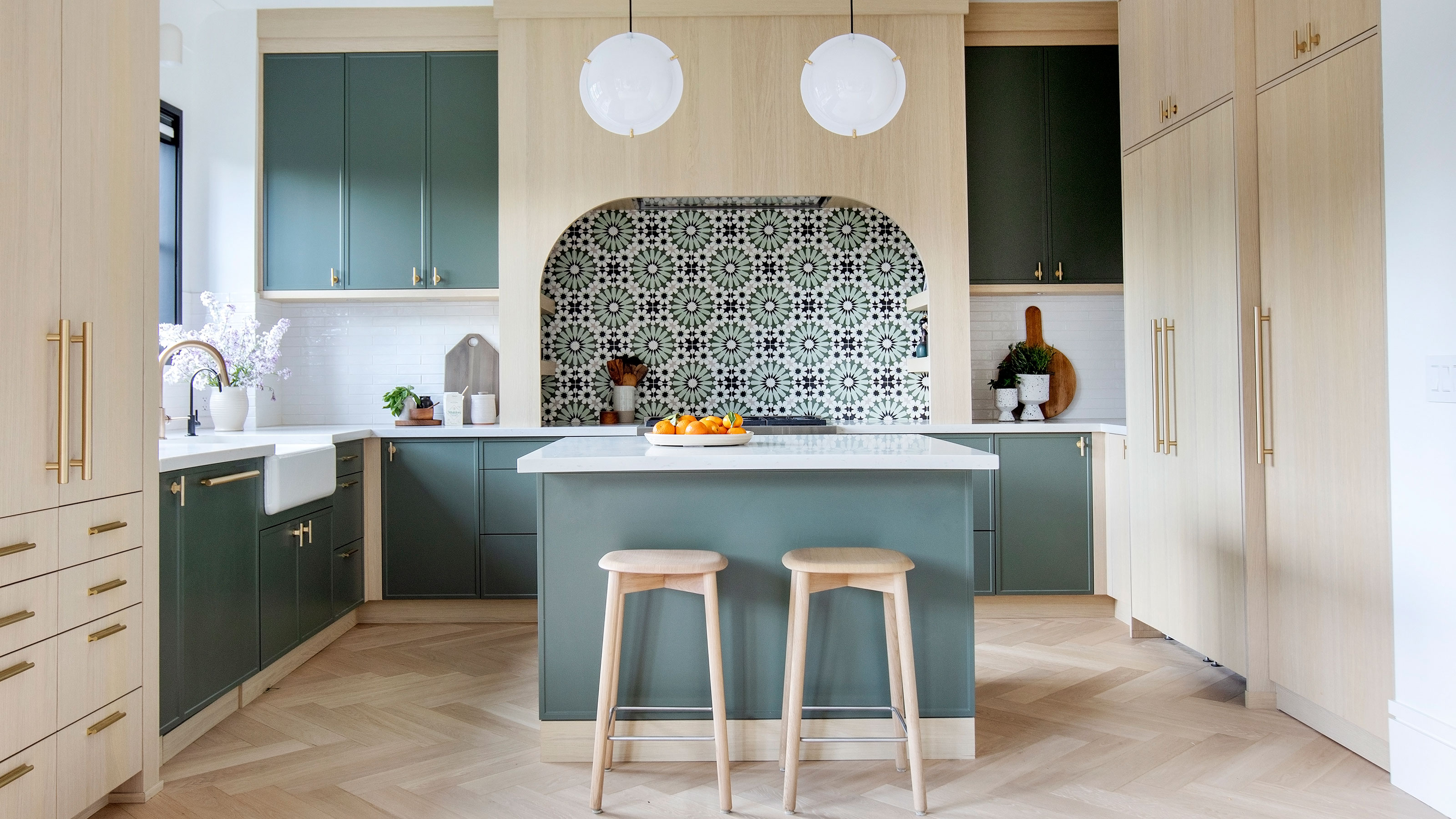

Gabriella Dyson
Using natural materials around our homes has become increasingly popular over the years, and in kitchens, wooden cabinets can be transformative.
If you have not updated your kitchen in a while, you'd be forgiven for being out of touch with kitchen cabinet styles, not to mention wood species of the moment. With different types of wood to choose from in a variety of finishes, you can now quite easily create the space of your dreams. Since cabinets form the base of a kitchen, get it right, and all small appliances and decor will sing, but get it wrong, and this cooking space falls flat like a pancake.
In the spirit of designing our homes with timeless appeal, we asked kitchen and interior design experts which wooden cabinet materials they recommend for good looks and longevity.
The best types of wooden cabinets for every style of kitchen
Wood is an enduring kitchen cabinet material, so it will come as no surprise that it can be quite an investment when it comes to calculating new kitchen costs. The better the craftsmanship, the bigger the price tag. But don't let this put you off installing wooden cabinets – with no end to kitchen cabinetry designs, there's a style and type of wood for every kitchen. This is what the experts have to say:
1. Timeless oak
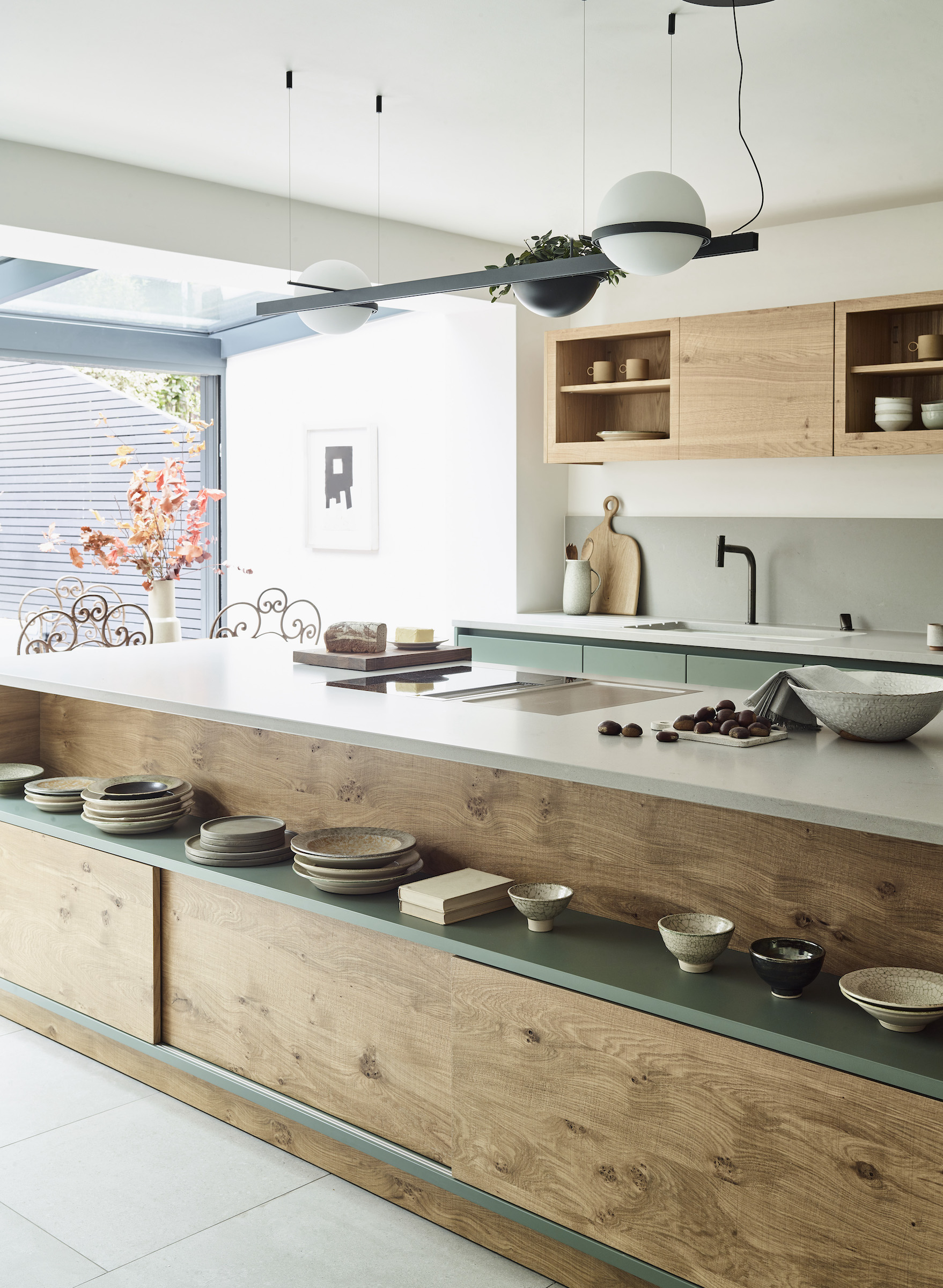
The popularity of oak never really sways. Its smooth and simple canvas makes it a versatile choice for wooden cabinets that suit most spaces. Although oak in the wrong finish might appear outdated, when done well, it exudes timeless appeal in a kitchen and lends itself to both modern and more traditional kitchen schemes.
'Oak has come and gone, but now it's everywhere again,' says Gladys Schanstra, owner and creative director of Drury Design. Rift-cut oak has cleaner lines than quarter-sawn oak. The difference with rift-cut oak is that it is easier to put your mark on it, taking well to glazing and colors to enhance its look.'
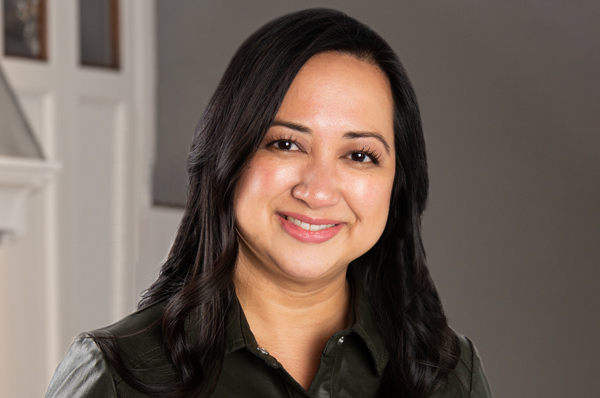
Gladys Schanstra is the Owner/Creative Director of Drury Design in Chicago's West 'Burbs. She holds the CMKBD and Allied ASID certifications in kitchen/bath design and interior design.
If you like the look of a real wood kitchen, oak is your answer.
'For non-painted timber kitchens, European Oak is a lovely timber as, being slow growing, it is not only exceptionally strong and hardwearing but has a beautiful even grain. It is important to opt for the finest grade, kiln-dried oak to ensure it is knot-free and stable,” shares Richard Moore, Design Director of Martin Moore (one of H&G's favorite kitchen designers).
'Oak finished in a grey or whitewash looks stunning in both contemporary and traditional settings,' he adds.

Richard Moore is the Design Director of Martin Moore. Founded in 1975 by his parents, Martin and Barbara Moore, Martin Moore has been creating bespoke, handmade kitchens for over 48 years. Richard heads the company alongside his brother, Michael Moore.
2. 'Good ol' walnut'
Walnut cabinets have a distinct beauty and make a seamless addition to all styles of kitchens.
'Good ol’ walnut with a beautiful grain can make a kitchen look luxurious,' continues Schanstra. 'It tends to have a little bit of a green hue to it. Walnut is classic. I don't see that going anywhere... it's a very beautiful wood grain, and it's relatively hard and durable.'
Walnut is especially popular in custom-fit kitchens, and though more expensive, it is particularly suited for those wanting a unique homespun look with a hallmark of durability. 'Walnut tops our list for bespoke kitchens,' shares Richard Davonport, Managing Director at Davonport. 'Its richness and dark aesthetic helps to give kitchens a warm and homely feel that is instantly inviting. It also works across both modern and contemporary kitchens and can be styled as such.
'As one of the most durable woods on the market, walnut is more resistant to wear than other options, partly because it is a hardwood, and its natural oils help to provide it with high levels of natural protection. For those who are eco-conscious, walnut is one of the easiest trees to grow and can be replenished more easily than other options. '
3. Marvelous maple
Though it was more popular some years ago, maple is another great hardwood material to consider for most styles of kitchens, especially if you like painted kitchens. It is durable and very shock-resistant. Aesthetically, it has a light grainy and uniform look which will give a fresh finish to a kitchen. Maple also takes very well staining, meaning that you can quite easily change the look of your kitchen through the years. Ideal for shaker kitchens that are eternally on trend, for example.
'Maple is popular because of its grain – it's easy to paint. Remember, it’s not the best for a light stain unless that’s the look you're going for,' adds Gladys.
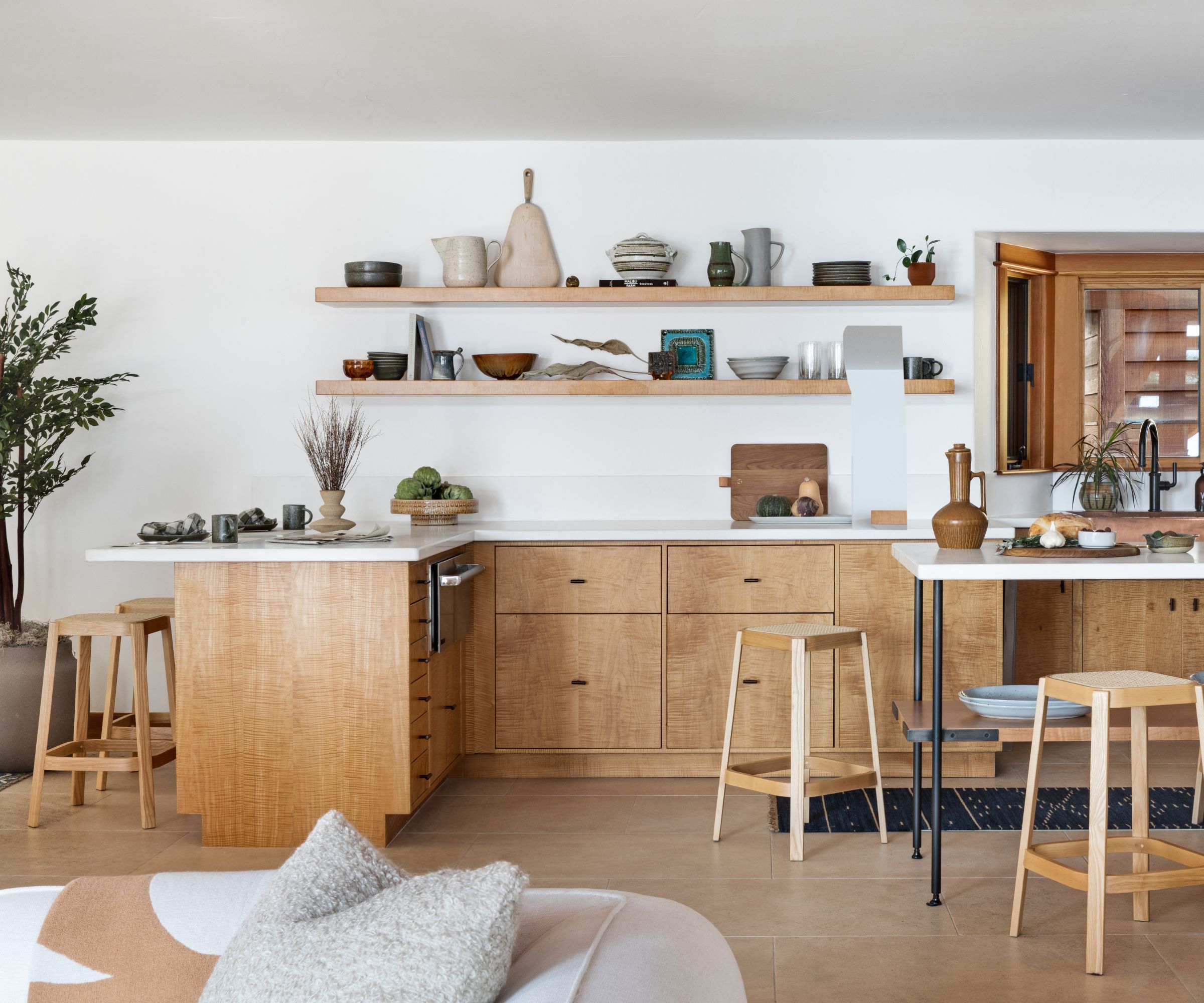
4. Tulipwood
'Tulipwood is an excellent timber to construct kitchens in as it is strong, stable and accepts paint well due to its close grain,' says Richard Moore. 'This type of wood is often hand-painted in a virtually limitless color palette, making it ideal for both traditional and contemporary interiors.'
5. Ash
Minimalist and Scandinavian kitchen fans will know the pale, sleek appearance of Ash well. While not as ubiquitous as oak or maple in kitchen cabinetry, ash is highly valued for its distinct grain pattern and light color palette, which can range from creamy white to light brown. This unique combination allows it to effortlessly inject a sense of openness and brightness into your kitchen, making it more inviting and spacious.
Ash can complement a rustic farmhouse kitchen look as easily as it can enhance a sleek, modern design. But beyond its visual appeal, ash wood stands out for its excellent durability. It's a hard, dense wood, making it resistant to knocks and scratches—a key consideration for the wear and tear expected in a busy kitchen. Its strength ensures your cabinets can withstand the demands of daily use, holding up well against the comings and goings of family life.
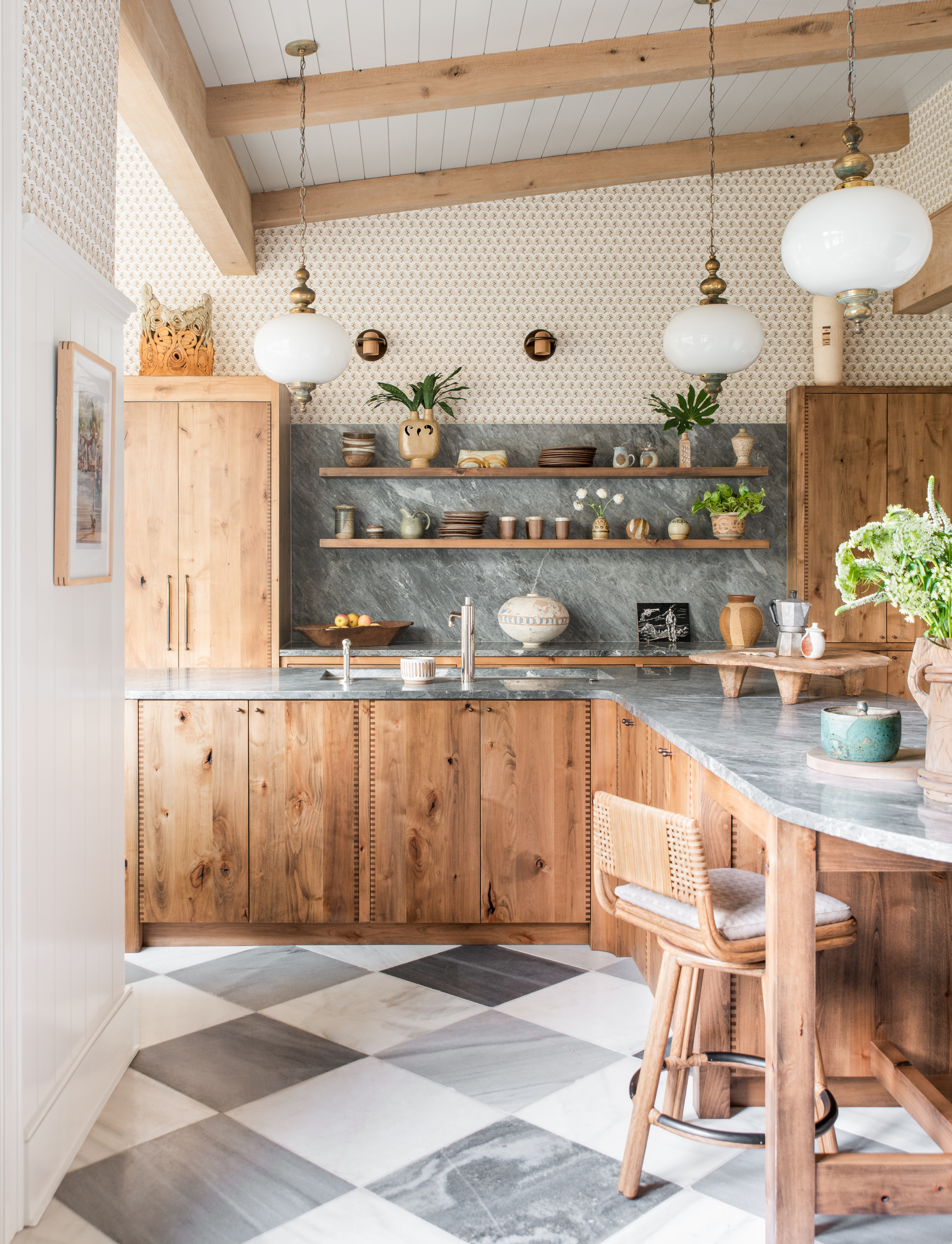
6. Pine
Pine wood is a popular choice for kitchen cabinets, especially for those aiming to create a warm, cozy, and rustic ambiance. Known for its affordability and availability, pine offers a light color palette that ranges from yellow to pale brown, adorned with distinctive knots and grain patterns. This characteristic look adds a touch of natural charm and character to kitchens, making it a favorite for cottage kitchens.
However, it's important to note that pine is a softer wood compared to hardwoods like walnut, ash, or oak. While this makes it easier to work with for custom designs or detailed carvings, it also means it's more susceptible to dents, scratches, and wear over time. This characteristic means pine cabinetry may require more maintenance and care over time to ensure your kitchen cabinets continue to look their best.
What's the difference in price between wood types?
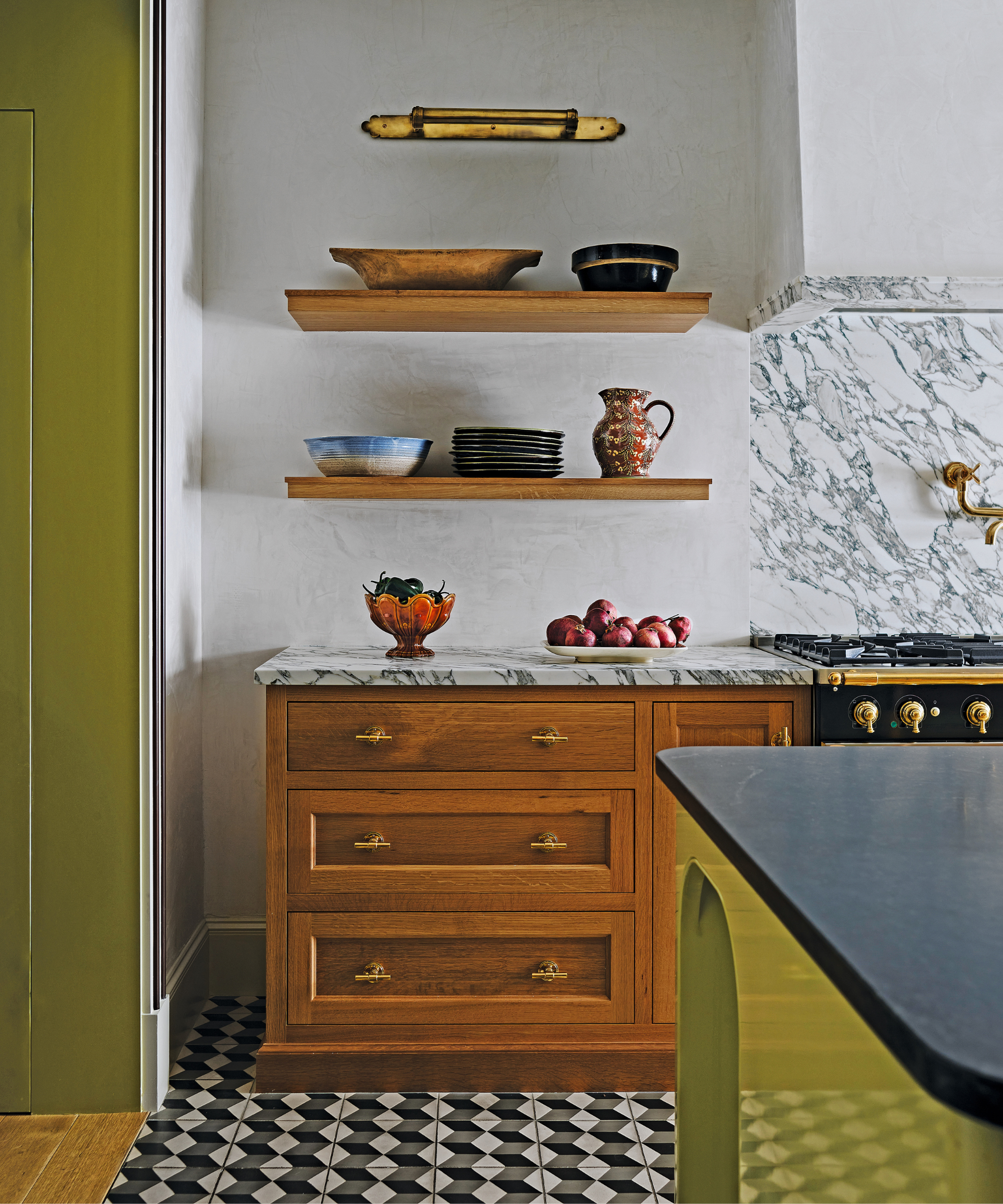
Prices for wooden kitchen cabinetry will vary due to factors such as availability, durability, and demand. Typically, hardwoods like walnut are less common and highly sought after for their beauty, making them more expensive. Softwoods like pine are more abundant and easier to work with, reducing costs. Additionally, the wood's origin and the labor involved in its processing and craftsmanship can significantly influence its final price.
Pine: Pine is generally the most affordable option among the woods listed here. Its availability and the fact that it's a softwood make it less expensive than its hardwood counterparts. Pine offers a budget-friendly choice for those seeking a warm, rustic look without breaking the bank.
Tulipwood: Tulipwood is relatively affordable and can be considered in the lower to mid-range cabinetry costs. It's a hardwood, but it's on the softer side of the hardwood spectrum, which makes it less costly than the more durable options.
Maple: Maple is a mid-range option that offers a good balance between cost and durability. It can also be stained to mimic more expensive woods, making it a versatile and cost-effective choice.
Oak: Oak is another mid-range hardwood that is popular for cabinetry. Oak's price is comparable to maple, though it can vary depending on whether you opt for red or white oak, with white oak usually being slightly more expensive.
Ash: Ash wood falls into the mid to high range in terms of cost. It's less common than oak or maple, which can make it more expensive. However, its durability and unique aesthetic make it a worthwhile investment for those looking for a blend of strength and beauty in their kitchen cabinetry.
Walnut: Walnut is at the higher end of the cost spectrum for kitchen cabinets. It's prized for its rich, dark color and fine grain, making it a premium choice for luxurious and high-end kitchen designs. Its cost reflects its status as a less common and highly desirable wood for cabinetry.
FAQs
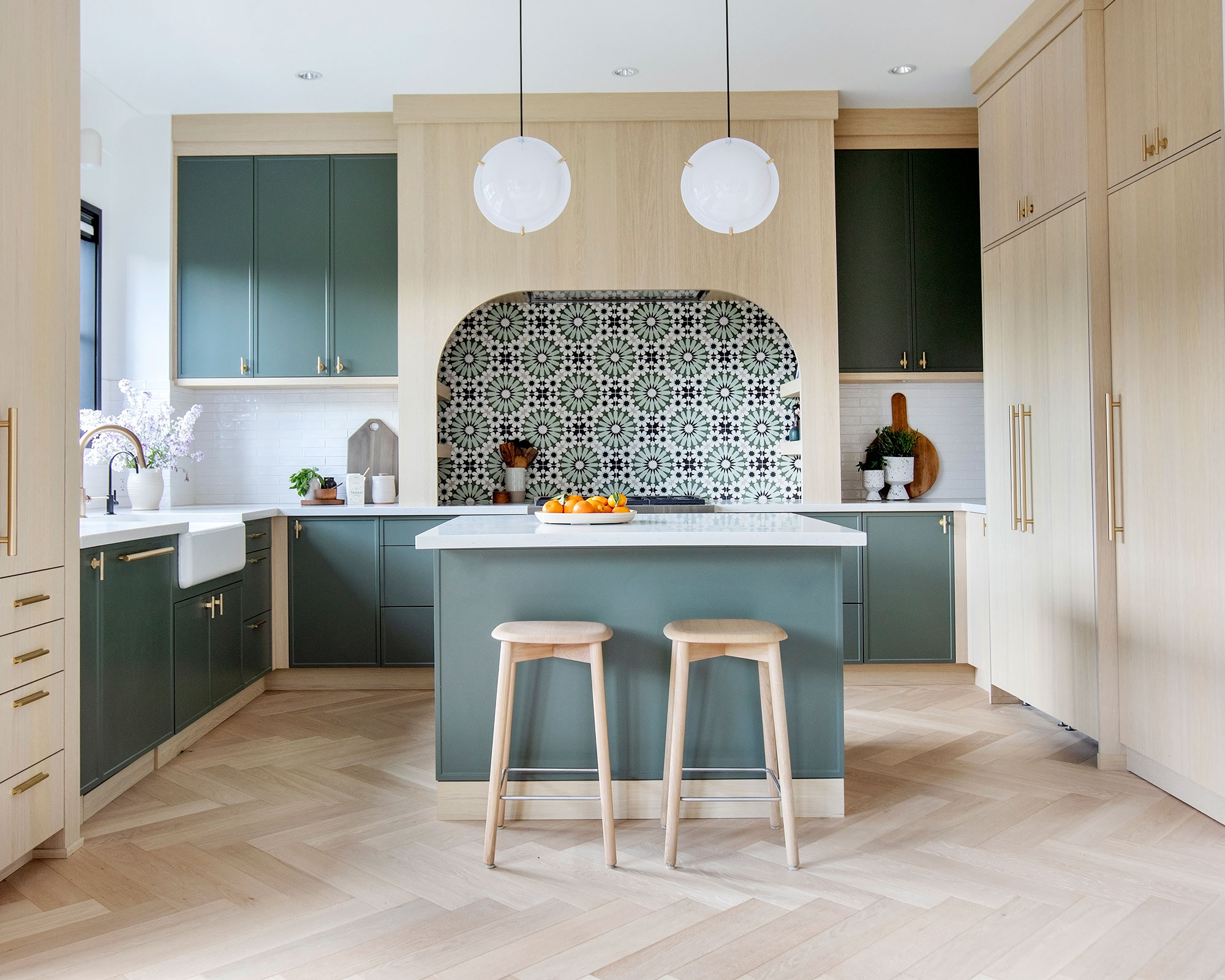
Are wooden kitchen cabinets in fashion?
'Kitchen trends come and go, and we are seeing a resurgence in styles – though slightly tweaked – especially the use of natural wood,' says Richard Davonport.
From Alder's distinctive knots that donned kitchen magazines some years ago, to hickory – the latter arguably a more outdated kitchen cabinet color trends that should have been left in the 80s – while wood is suitable for kitchens, there is no denying that some have more appeal than others nowadays.
'30 years ago, maple and cherry were hugely popular, with walnut coming on the scene about 18 years ago; oak stands the test of time no matter what decade we are in,' says Richard. 'One reason why wood cabinets are back in fashion is because kitchen color palettes are changing in kitchen design, shifting towards warmer colors which luckily doesn’t have to be achieved by paint alone. The rich, natural beauty of wood cabinets - and potentially wooden countertops - gives complexity and character to spaces that color alone struggles to match.'
How can you choose the best wood kitchen cabinets?
'Choosing wooden cabinets for both style and longevity depends on your personal style preferences, budget, and the level of maintenance you're willing to commit to,' says Kim Pogue, senior merchant of cabinets and sinks at The Home Depot.
Much will depend on the kitchen or cabinet designers you are working with, as they will each have a unique preference for where they source, treat, and finish their timber, depending on domestic availability.
'Learn the standards, but be open to how other wood species can be used. Always explore what’s actually available,' adds Gladys Schanstra, owner and creative director of Drury Design
Should I use reclaimed wood?
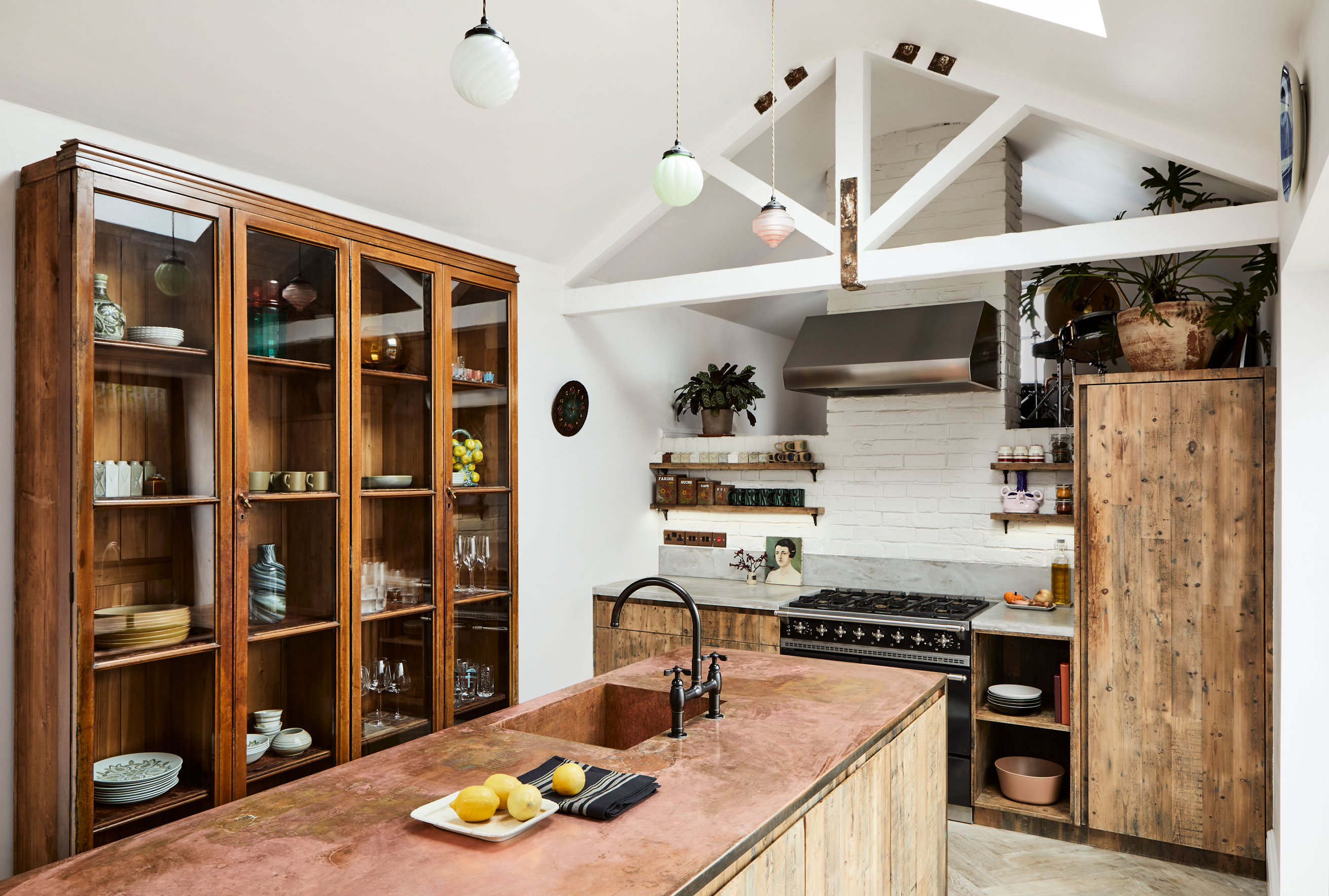
Reclaimed wood has become a popular choice for kitchen cabinetry, appealing to those looking for an eco-friendly option with unique character and history. This wood is salvaged from old buildings, barns, and other structures, offering a sustainable alternative by repurposing existing materials. The appeal of reclaimed wood lies not only in its environmental benefits but also in its distinct aesthetic, featuring weathered textures, varied grain patterns, and traces of its past life that add depth and warmth to any kitchen design.
You can source reclaimed wooden cabinets from specialty lumber yards and salvage shops, as well as online marketplaces. Prices for reclaimed wood can vary widely based on its rarity, condition, and history. Generally, it might be on par with or slightly higher than virgin wood, especially for sought-after species or wood with a notable provenance. However, the cost is often offset by the unique character and sustainability credentials it brings to your kitchen cabinetry.
Do your research with kitchen designers and branch out (pun intended). Ultimately, choose quality that is beautiful in your eyes, responsibly sourced, and made with true craftsmanship. Above all, your choice of wood should complement the rest of your kitchen design.
Sign up to the Homes & Gardens newsletter
Design expertise in your inbox – from inspiring decorating ideas and beautiful celebrity homes to practical gardening advice and shopping round-ups.

Camille is the former deputy editor of Real Homes where she covered a broad range of topics, including house tours, small space design, and gardens. She studied English language and Italian at the University of Manchester and during a year abroad studying linguistics and history of art in Bologna, Italy she started documenting her adventures and observations in a blog. Camille is always creating and spends her downtime painting, taking photos, traveling, and writing short stories.
- Gabriella DysonContributor
-
 Charli XCX's dining room is a 'treasure-trove' of one-of-a-kind pieces – it's the most unique hosting space I've ever seen (and surprisingly replicable)
Charli XCX's dining room is a 'treasure-trove' of one-of-a-kind pieces – it's the most unique hosting space I've ever seen (and surprisingly replicable)The singer's Tudor-style dining room features eclectic furnishings, a mix of patterns and bright colors that all work together beautifully
By Hannah Ziegler Published
-
 The 5 worst things you can do to your fridge – these will drive up energy costs and result in pricey and regrettable repairs
The 5 worst things you can do to your fridge – these will drive up energy costs and result in pricey and regrettable repairsIt's crucial to swerve these blunders, appliance experts warn
By Ottilie Blackhall Published
